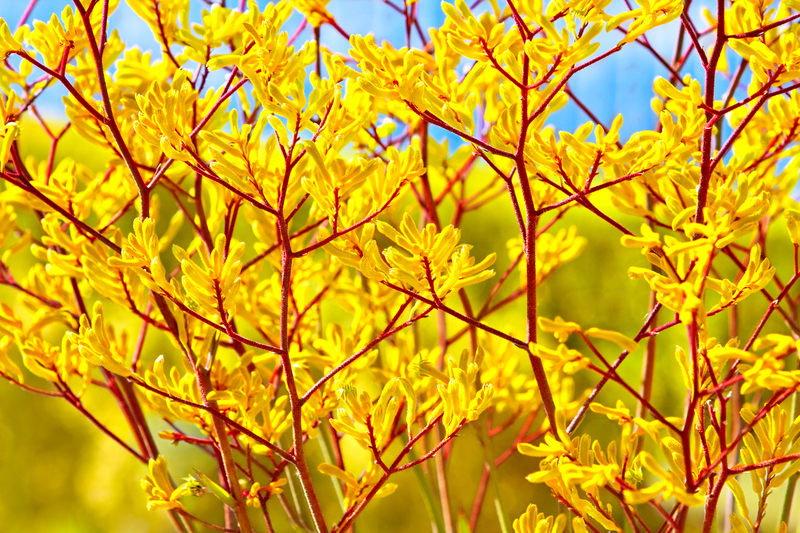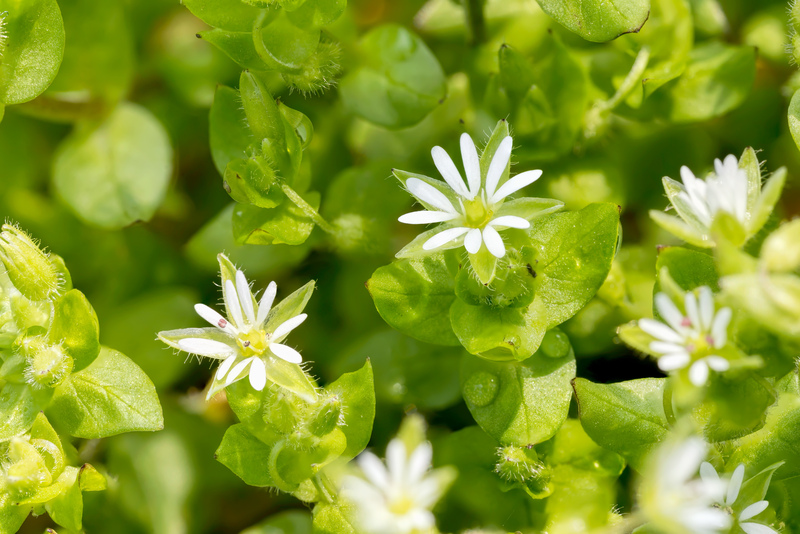Secrets to Keeping Your Orchids Blooming
Posted on 20/09/2025
Secrets to Keeping Your Orchids Blooming
Orchids enchant with their elegant, colorful flowers, yet keeping them in bloom is a challenge even for experienced gardeners. Would you love to see your orchids sending forth graceful blooms year-round? Discover the well-guarded secrets to maintaining healthy, flowering orchids and transform your home into a botanical paradise!
Why Do Orchids Stop Blooming?
The journey to continuous orchid blooms starts with understanding why your gorgeous plant may stop flowering. Several key factors can halt orchid blooming unexpectedly, including:
- Improper light exposure
- Incorrect watering routines
- Poor nutrition
- Temperature fluctuations
- Lack of proper humidity
- Ignoring repotting needs
Each of these factors can stress your plant, reducing its ability to flower. Being mindful of your orchid's unique needs unlocks the secrets to keeping your orchids blooming time and again.

Choose the Right Orchid Variety
Success begins with selection. With over 25,000 orchid species and countless hybrids, not all orchids are created equal when it comes to ease of care and frequency of flowering. Some varieties, like Phalaenopsis (Moth Orchids), are famous for their long-lasting, recurring blooms, while others may require expertise and patience.
Top Orchid Varieties for Home Gardeners
- Phalaenopsis ("Moth Orchid") - Ideal for beginners; blooms can last months
- Dendrobium - Colorful and diverse, many rebloom multiple times per year
- Cattleya - Famous for their large, fragrant flowers
- Oncidium ("Dancing Lady Orchid") - Frequent, cheerful blooms
Tip: Start your orchid journey with varieties that are suited to your climate and experience level. This greatly improves your chances of keeping your orchids blooming steadily.
Light: The Key Ingredient for Orchid Blooms
One of the top orchid blooming secrets is the importance of light. Orchids need bright, indirect sunlight to initiate new flower spikes. Too little light, and you'll get leaves but no blooms; too much, and you risk burning the sensitive foliage.
How Much Light Does Your Orchid Need?
- Phalaenopsis: Moderate, indirect light (east-facing window is best)
- Cattleya & Dendrobium: Bright, filtered sunlight (south or west windows, filtered with a sheer curtain)
- Oncidium: Adaptable, but appreciate bright, shaded spots
Check leaf color: Healthy orchids typically have light to medium green leaves. Dark greens suggest too little light; reddish tints may indicate too much.
Mastering Orchid Watering
Watering correctly is possibly the most crucial orchid care secret. Overwatering causes root rot, while underwatering stresses your plant and inhibits flowering.
Orchid Watering Guide
- Water less frequently than typical houseplants; allow roots to dry slightly between waterings
- Use room temperature water (rain or distilled is best)
- Water early in the day to allow foliage to dry by nighttime
- Never let your orchid sit in water!
Tip: Most orchids thrive when watered once a week, but always adjust according to the climate, potting medium, and variety.
Provide Adequate Humidity
Orchids, originating from humid tropical forests, flourish with humidity levels of 50-70%. If your home is too dry, buds may drop and orchids will struggle to bloom.
Simple Humidity Boosters
- Grouping plants together to create a microclimate
- Humidity trays filled with water and pebbles under the pots
- Misting orchid leaves (not flowers) with a fine spray of water during dry seasons
- Using a room humidifier
Pro tip: Avoid misting late in the day, as this can encourage disease and fungal problems.
Feeding Your Orchids for Vibrant Blooms
Orchids are light feeders, but consistent nourishment is key for repeat blooming. Using the right fertilizer at the correct intervals is a core secret to orchid flower success.
Feeding Schedule and Types
- Use a balanced orchid fertilizer (20-20-20) every 2-4 weeks during the growing season
- Switch to a "bloom booster" fertilizer (higher in phosphorus) as flower spikes emerge
- Dilute fertilizer to half the strength recommended on the label to avoid root burn
Remember: "Weekly, weakly" is a good mantra for feeding orchids! Flush the potting media with plain water every couple of months to prevent salt buildup.
The Right Temperature for Reblooming Orchids
Temperature variation is an often overlooked secret to encouraging orchid flowers. Many orchids need both daytime warmth and cooler nighttime temperatures (a difference of 10-15?F/6-8?C) to trigger blooming.
- Daytime: 65-85?F (18-29?C)
- Nighttime: 55-65?F (13-18?C)
Phalaenopsis in particular often require a few weeks of cooler nights to initiate new flower spikes - try moving your orchid to a cooler spot in late summer or early fall.
Repotting: Don't Let Your Orchid Become Pot-Bound
Old, compacted potting mix can suffocate orchid roots and halt blooming.
When and How to Repot Orchids
- Repot every 1-2 years (or when roots overflow the container)
- Choose a well-draining orchid mix, such as bark, sphagnum moss, or coconut husk
- Repotting is best done after blooming has finished
Tip: Healthy roots are white with green tips; brown or mushy roots should be trimmed away during repotting.
Encouraging Repeat Blooms: The #1 Orchid Secret
Want to keep your orchids blooming year-round? Here are the top proven techniques professional orchid growers use:
- Simulate natural cyclical changes: Vary temperature and light between "rest" and "growth" seasons.
- Trim flower spikes properly: For Phalaenopsis, cut the spent spike just above a node to encourage a secondary spike.
- Don't disturb roots unnecessarily: Orchids dislike being shifted or repotted more than needed.
- Observe and respond to your orchid's signals: Yellowing leaves, shriveled pseudobulbs, or stunted new growth are all clues to change care routines.
Bonus: How to Get a Dormant Orchid to Bloom Again
- Ensure proper light and temperature changes. Cooler nights can trigger flower spikes.
- Check roots and repot if potting mix has broken down.
- Resume balanced fertilizing after blooming downtime.
- Be patient! Some orchids take 6-12 months between flowerings.
Common Orchid Care Mistakes to Avoid
- Overwatering is the fastest way to harm your orchid - always allow media to dry a bit!
- Using tap water high in minerals can damage sensitive orchids.
- Neglecting to clean leaves and pots - a dusty or moldy plant is less likely to flourish.
- Placing orchids in drafty spots or near ripening fruit; both can cause bud drop due to ethylene gas or temperature swings.
Troubleshooting: Why Is My Orchid Not Blooming?
If your orchid refuses to bloom, work through this checklist:
- Light: Is it too little or too much?
- Water: Is it dry, or roots soggy and damaged?
- Temperature: Has it experienced a drop at night?
- Fertilizer: Is it being fed regularly, but not excessively?
- Humidity: Is the environment too dry?
- Potting Mix: Is it fresh and well-drained?
Most orchid blooming issues can be traced to just one or two missteps in the above areas.

Expert Tips: Orchid Flower Longevity & Display
- Keep blooming orchids out of direct sunlight to prevent flower fade.
- Prune spent flowers promptly; this encourages more blooms and keeps the plant healthy.
- Display away from fruit bowls: Ripening fruit emits ethylene, which shortens flower life.
Final Thoughts: Enjoying Orchid Blooms Year-Round
The secrets to keeping your orchids blooming are no longer reserved for only professional horticulturists. By mastering light, water, humidity, temperature, feeding, and repotting, you can transform any home or garden into a haven for gorgeous orchids. Remember, growing orchids is as much an art as a science--observe your plants, make small adjustments, and most importantly, enjoy the satisfaction of their exquisite, long-lasting flowers!
With the right care, your orchid can reward you with spectacular blooms for years to come--an achievable dream for any indoor gardener.
Frequently Asked Questions - Orchid Blooming Secrets
- How long do orchid flowers last? - Many orchid blossoms last from 2 to 4 months, while some (like Phalaenopsis) can last up to 6 months under ideal conditions.
- Should I prune my orchid after flowering? - Yes, especially for Phalaenopsis: cut the spike above a node to encourage more blooms.
- How often will my orchid rebloom? - Healthy orchids can rebloom once or twice a year, with some varieties even more frequent.
- Is there a "best" spot for orchids in the home? - East-facing windows with bright, indirect sunlight are ideal for most orchids.
Unlock your orchid's potential by applying these orchid care secrets and enjoy wave after wave of spectacular blooms! Happy growing!

